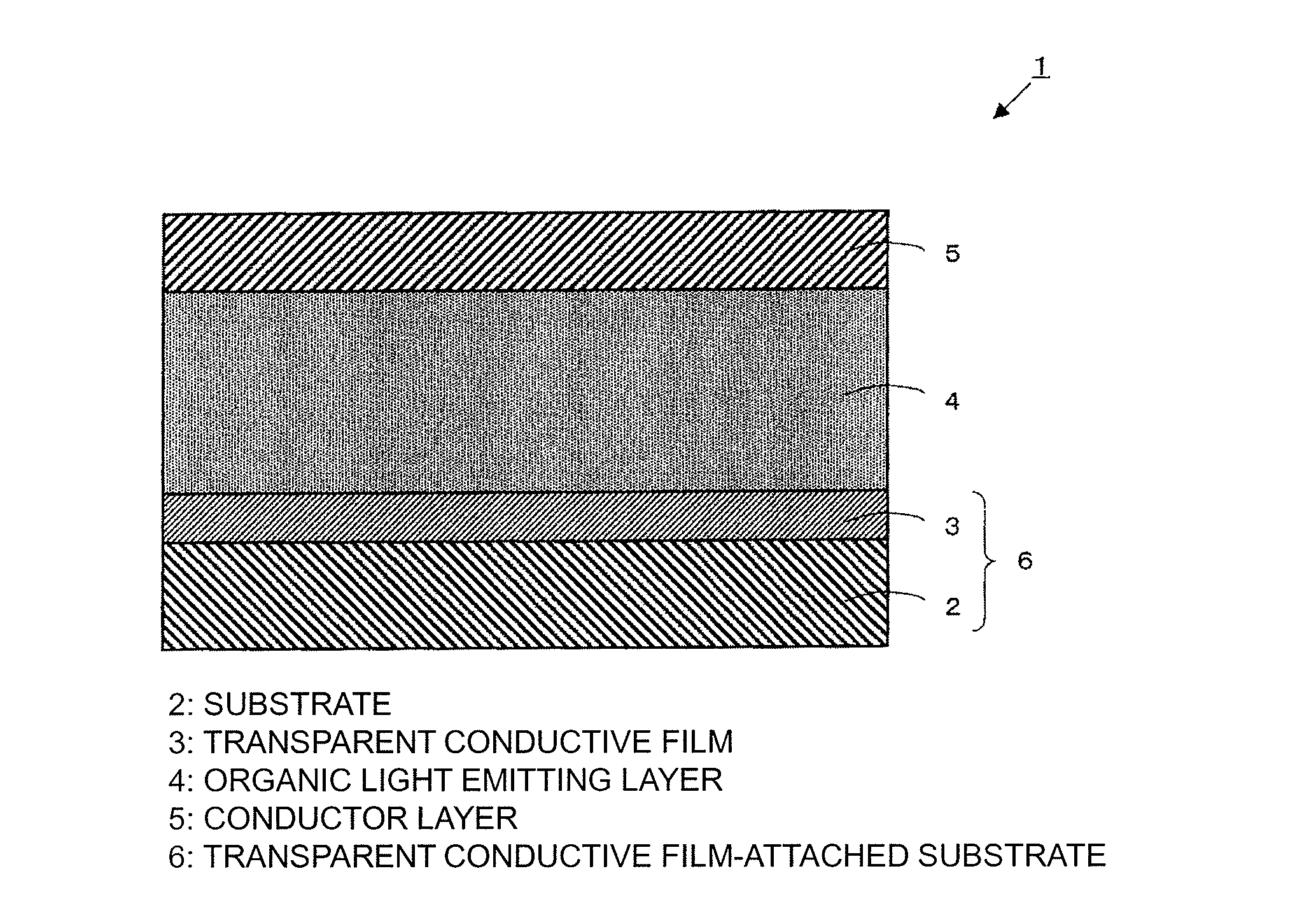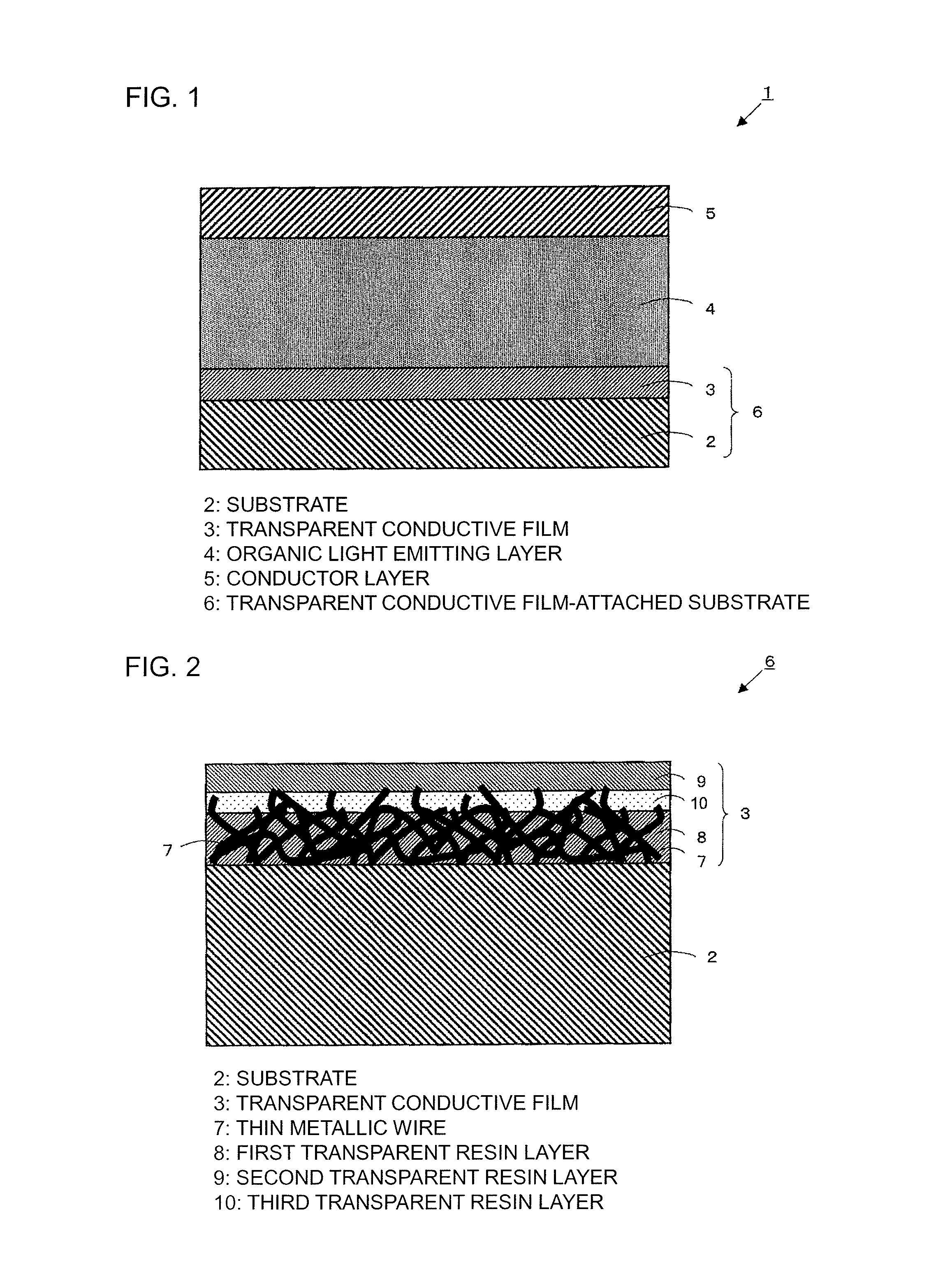Transparent conductive film, substrate with transparent conductive film, and organic electroluminescence element using the same
a technology of transparent conductive film and organic electroluminescence element, which is applied in the direction of non-metal conductors, instruments, conductors, etc., can solve the problems of increased cost in the manufacturing of devices using organic el elements, poor smoothness, and easy breakage of materials with respect to bending or physical stress, so as to achieve uniform electrical conductivity, suppress mixing of one layer with the other, and smooth surface
- Summary
- Abstract
- Description
- Claims
- Application Information
AI Technical Summary
Benefits of technology
Problems solved by technology
Method used
Image
Examples
example 1
[0068]As a substrate, alkali-free glass No. 1737 manufactured by Corning Incorporated (the refractive index of light having a wavelength of 500 nm is 1.50 to 1.53) was prepared. Next, the previously-produced material of the first transparent resin layer which material includes the thin metallic wires was applied onto the substrate by a spin coating method such that the thickness was 100 nm, and was heated for 5 minutes at 100° C. By so doing, the first transparent resin layer was formed on the substrate. Next, the material of the first porous layer was applied onto the first transparent resin layer such that the thickness was 30 nm, and was heated for 5 minutes at 100° C. By so doing, a porous layer having a contact angle of 30 degrees with respect to water was formed on the first transparent resin layer. Next, the material of the second transparent resin layer was applied onto the porous layer such that the thickness was 100 nm, and was heated for 5 minutes at 100° C. By so doing, ...
example 2
[0069]The sample of Example 2 was produced in the same manner as Example 1 described above, except that instead of the material of the first porous layer, the material of the second porous layer was used to form a second porous layer having a pore diameter of 10 nm and a contact angle of 60 degrees with respect to water.
example 3
[0070]The sample of Example 3 was produced in the same manner as Example 1 described above, except that the material of the first porous layer was applied onto the substrate such that the thickness was 300 nm.
PUM
| Property | Measurement | Unit |
|---|---|---|
| pore diameter | aaaaa | aaaaa |
| pore diameter | aaaaa | aaaaa |
| thickness | aaaaa | aaaaa |
Abstract
Description
Claims
Application Information
 Login to View More
Login to View More - R&D
- Intellectual Property
- Life Sciences
- Materials
- Tech Scout
- Unparalleled Data Quality
- Higher Quality Content
- 60% Fewer Hallucinations
Browse by: Latest US Patents, China's latest patents, Technical Efficacy Thesaurus, Application Domain, Technology Topic, Popular Technical Reports.
© 2025 PatSnap. All rights reserved.Legal|Privacy policy|Modern Slavery Act Transparency Statement|Sitemap|About US| Contact US: help@patsnap.com



